Today we check out the $149 iFi ZEN CAN headphone amplifier in this review.
Disclaimer: The iFi ZEN CAN was provided directly by iFi Audio. The review reflects my sincere opinions as always. The sound impressions were taken with Sennheiser HD800S, Hifiman Deva (wired), and the Thieaudio Phantom headphones.
About iFi Audio
Belonging to the group AMR (Abbingdon Music Research Group), which is one of the largest audio equipment manufacturers in the UK, iFi Audio is a manufacturer of several DACs and amplifiers, as well as other accessories for computer & home audio. I already reviewed five different iFi products before this, which are the Nano iOne, the Nano iDSD Black Label, the xDSD, the xCAN, and the ZEN Blue.
iFi Audio has a very open and charming communication which makes things a lot easier, at least it’s been the case for me. They pay attention to the products of course, but they also pay attention to make you happy. I’m pretty sure this is also the case for their actual customers. Also, I would like to pay special thanks to Karina for this review sample.
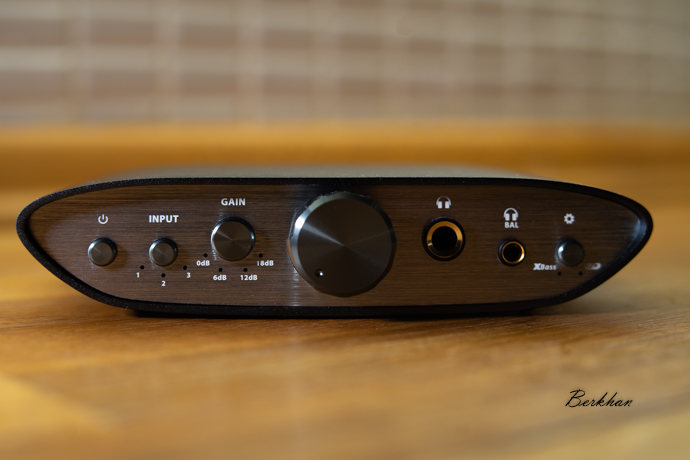
About iFi ZEN Can
The iFi Zen Can is a super-affordable Class A desktop headphone amplifier. It has the discrete balanced circuitry from iFi audio’s US$1,699 flagship Pro iCAN. With 15.1v @300 Ohms on tap, it has serious power that will make even difficult-to-drive headphones. In detail, it has the following features:
- Class A discrete output buffer from the flagship Pro iCAN using Op-Amp (OV2637A)
- FET input avoids loading volume control – low distortion/noise
- SE inputs (1M Ohm) ensures loading of the source so always in Class A operation
- Output amplifier gain of four steps in +6dB perfect for headphone matching
Other than those above, it has the classic iFi features like 3D & xBass sound effects. The amplifier also supports the new balanced standard of 4.4mm for its balanced headphone output. The single-ended output is 6.3mm.
The ZEN CAN’s output power levels are as follows:
Balanced
>15.1V/385 mW (@ 600 Ohm)
>11.0V/1890 mW (@ 64 Ohm)
Single Ended
>7.6V/196 mW (@ 300 Ohm)
>7.2V/1600 mW (@ 32 Ohm)
You can check more figures and details on the product page of the ZEN CAN.
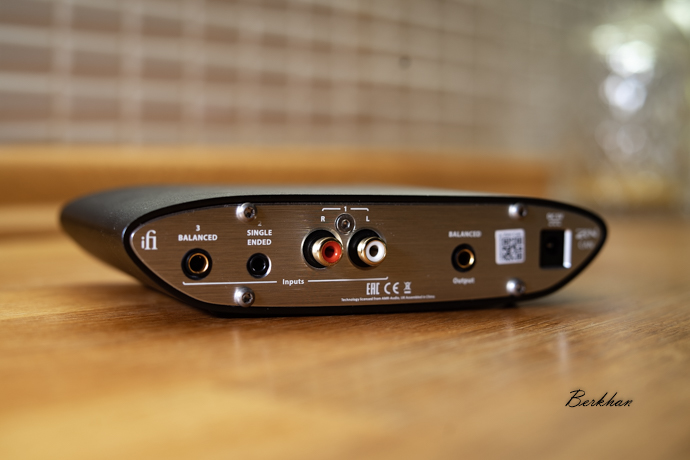
Packaging
The ZEN CAN arrives in a very simple and modest package. You get the device on the left, and accessories on the right. The small box stores an RCA cable and an adapter for powering up the device. You also get a 6.3mm adapter which is nice.
As always with iFi Audio, the packaging is made from recyclable materials. This is a considerate decision from iFi and I’m glad that they’re keeping this up. The presentation of the package is unimpressive, to say the least, but it works perfectly as I didn’t see any deformations from shipping. I’m not into fancy packaging, to be honest, so this gets the job done for me.
Design
Appearance-wise the iFi ZEN CAN looks very nice and industrial with that certain iFi touch. Right from the start, you feel that this is solely a device for desktop use. I liked the design language simply because of its sleekness and simplicity with the brushed aluminum finish. But design and looks are personal topics of course. This is just my feeling. Nevertheless, I think this is a very thoughtful design for home-usage. I also realized that it is quite smaller in real life than in photographs.
The front side has the on/off button, input selector, gain switch which has 4 levels, the volume pot, the 6.3mm & 4.4mm outputs, and the xBass/3D effect button. All of the switches are indicated LED lights, and I liked the fact that there are 4 different gain levels which makes this amp highly versatile.
On the back, some inputs are 4.4mm balanced, 3.5mm single-ended, and RCA. There’s one more 4.4mm balanced output on the back which I think is there for speaker connection. Last but not least, there’s the 5V DC power input.
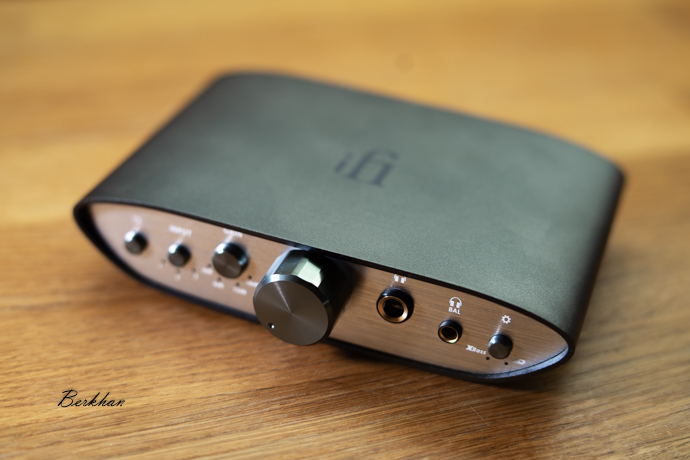
Build Quality
The volume pot feels very rigid and it has just the right weight when you turn it. However, I can’t say the same for the buttons. They don’t feel very premium and it is kind of a letdown because all the other parts of the device are exceptionally well built. But when you press the buttons, the tactile feeling is unimpressive and cheap, to be honest. I would’ve liked better-designed buttons. However, I’m also aware that this is not a premium amplifier which you can easily say by looking at its asking price.
Other than that, from its silicone stoppers underneath to the outputs on the back, everything is solid and durable. Considering that it is a home device, nothing gives any worries to the user in terms of long term durability. It’s rugged, smooth, and reassuring.
The review continues on page 2 about the sound.





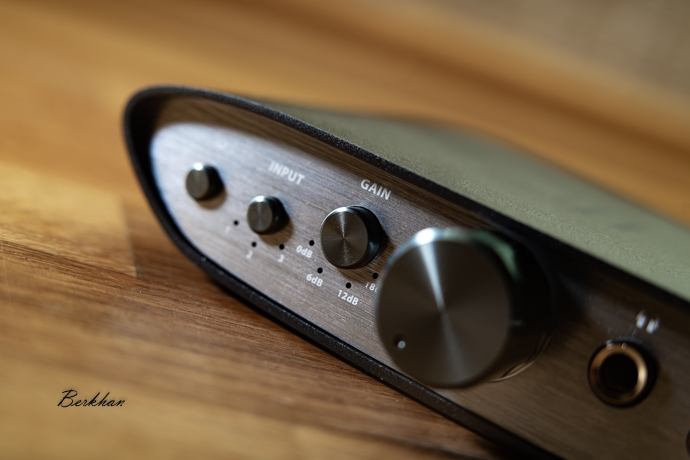
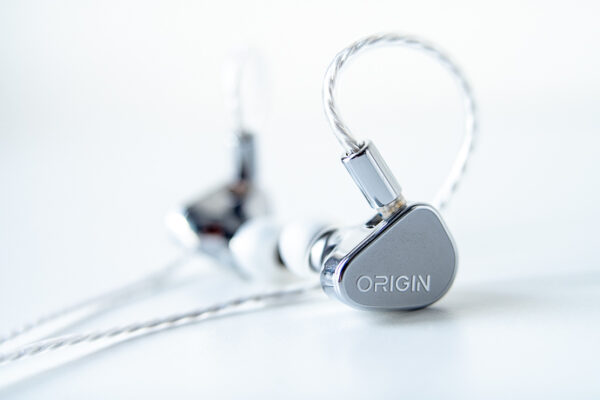
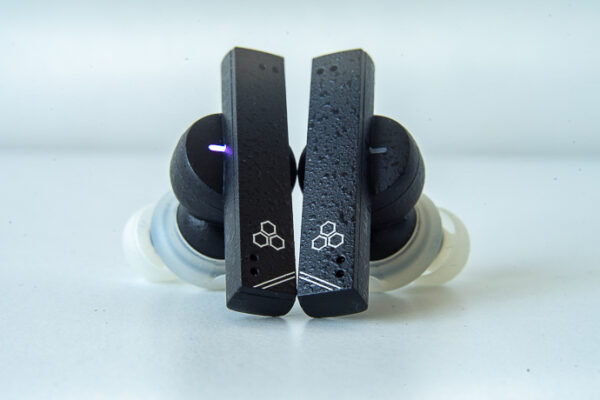
Thomas
Thanks for the great review. I have one question, is the 4.4 Pentaconn balanced line output on the back muted when headphones are used?